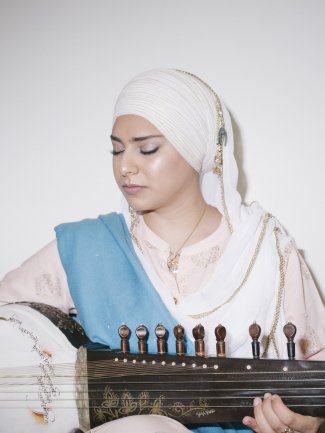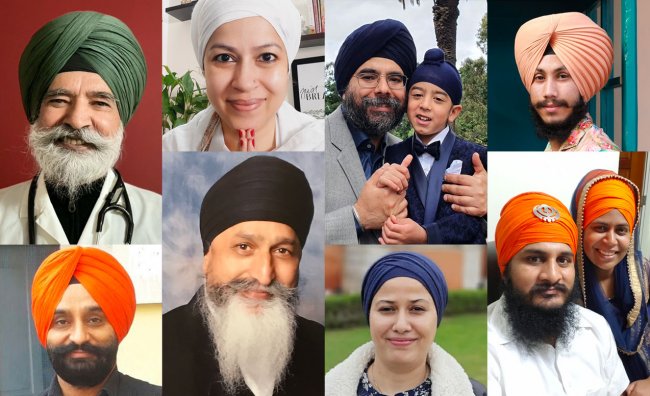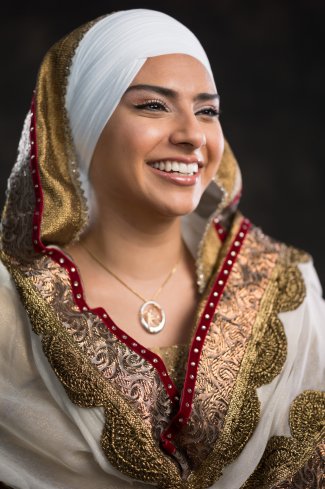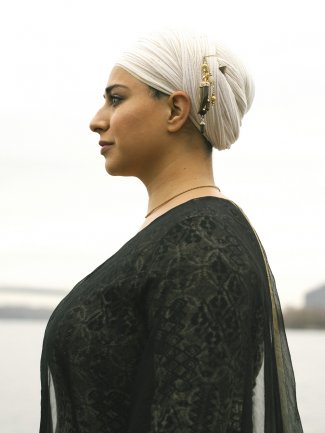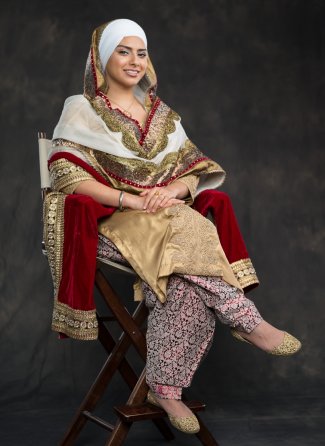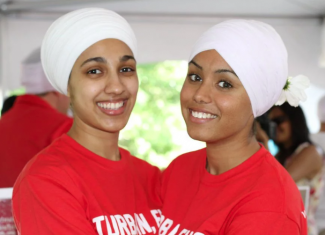On April 14th across the UK and the entire world we will witness the celebration of Vaisakhi, a festival of harvest for farmers, for Sikhs, Vaisakhi observes the birth of the Khalsa. Khalsa means to be pure of mind and heart, well intentioned and liberated, a community of conscious individuals who choose a path of righteousness and practise the tenants of Sikhi laid out by the Sikh Gurus. The Khalsa was initiated in 1699 by the Tenth Sikh Guru, Guru Gobind Singh Ji, it was a key event in Sikh history that solidified the pillars of the faith and set a bar of moral and social responsibility for each and every practitioner. Vaisakhi is the time of year that Sikhs across the world will gather, sing sacred kirtan, revisit history and be inspired through the lives of their ancestors and forefathers to strengthen and deepen their spiritual connection with their faith, community, and their spiritual practice.
Vaisakhi is a very important time of year for Sikhs across the world as it marks the birth of the Khalsa and a way of life that not only encourages but advocates for gender equality and social consciousness. To be ordained as Khalsa you must be ready to make certain promises which you vow to uphold with Akaal Purakh (God) as your accountability and commit to a disciplined internal and external lifestyle. It is often during the time of Vaisakhi that many people will become inspired to take their practice of Sikhi a step further and make an active commitment towards living their path of faith and partake in the ceremony of taking Amrit (to be initiated).
It is easy to identify a Sikh who has taken Amrit by their outer appearance, men will wear turbans under which they have their Kes (uncut hair), they will have full beautiful beards caressing their face, a Kara (iron bangle) on their wrist and for some who choose, you will see their Kirpan (sacred sword/dagger) others will keep the Kirpan unseen. The items not visible on the exterior will be the Kanga (a wooden comb to serve the beautiful locks of uncut hair) and the Kachhera (cotton underwear) for mental and sexual discipline. Although this may seem odd to some, there is depth and meaning behind each of this 5 Kakaar. They each encourage and serve as a reminder to stay grounded, morally and socially conscious, humble and grateful, as well as ready to protect anyone in need. These values and articles of faith are worn equally by practising Sikh men & women and in some cases, women will also choose to wear a Dastaar.
The original word for turban is Dastaar which comes from the Persian language, meaning ‘the hand of God’. This word has far more depth as to what a Dastaar means for Sikh’s, it represents the strength and glory of goodness, meaning that the body which adorns a Dastaar is held and protected in God's hands. This is the reason that the Dastaar is sacred to the Sikh community and far more than just a piece of cloth to wrap the hair.
The distinction between a Turban and Dastaar is very important to make in understanding the cultural and spiritual difference between what they each mean and represent. A Turban (Pagh/ Paghri) is a cultural item of headwear used across many cultures, communities and continents and has been used this way for centuries, it has no religious or spiritual significance. The Dastaar is an intentional item of faith that is layered with consciousness, compassion, social responsibility, as well as a higher level of accountability (to Akaal Purakh). Wearing a Dastaar might seem the same as a turban because essentially you are tying a piece of cloth on your head but the essence, meaning and purpose of a Dastaar is far greater. You are making an active commitment to represent goodness and Sikhi in action as an ambassador, you are outwardly stating that you are a reliable, trustworthy and safe person that can be approached in the instance that someone needs protection. You are not a pacifist you are an activist who steps up and rises to support and help others in need. That you will go out of your way to fight for the rights of others and not turn a blind eye to injustices. For it is the Hand of God that sits on your head so be conscious, be wise, be intentional.
As a Sikh woman, born and raised in England, I have been wearing my Dastaar for 20 years and it is truly a part of me and who I am. It definitely wasn’t an easy 20 year journey but most certainly a great experience of learning and growth. I was 18 when I took the step to fully commit to my practice of Sikhi and take Amrit, just before moving away from home for my university education in London. This was a shocking and surprising moment for the people around me, including my parents who were not in favour of me wearing a Dastaar. Apparently, I was too young. I should enjoy my life and not restrict myself like this. I was being told I would struggle finding a husband if I wear a turban, that I will get harassed more on the streets and that I will never get a good job because I will look too different, and society won’t accept me this way. Did any of that stop me? Not even for a second. I was sure, I knew, I had found my path and I was ready to walk it with all the love and strength within me, I just knew, so I stepped in with full commitment and discipline.
It was in the years ahead that I would pause to reflect on the words I was subject to at the beginning of my journey when I had awful, hurtful, derogatory, and violent comments thrown at me in passing from strangers. People who didn’t know me, or my faith would throw blanket statements of racism without any consideration or understanding. I was told to go back to my own country so many times throughout my life that I’ve lost count, this always left me confused because I was born in this country, so this is my country. It took me a lot of learning to truly understand what that means for people like me, to take ownership of our uniqueness and no longer feel it to be a weakness or disadvantage but something to celebrate and share with others.
In the wider world, this is the language of Diversity, Inclusion, Equity, Belonging, Equality and Anti-Racism which is not only required in places of work, education and community but also in society and the world in general. I wish people had stopped to ask me questions, instead of hurling abuse, I would have happily conversed and shared with them, and equally I would have been interested to learn about them and their culture because that is truly how diversity and inclusion transform from being buzzwords into actions that matter. When we all take a moment to learn about others who are different to us, we actively contribute to making the world a better and more inclusive place and that is what we all should aspire towards, but we have much work yet to do in this space of activating inclusion.
The wisdom and empath I embody now, comes through the many ebbs and flows of life that I have lived, we are not all equipped emotionally to endure them and often we are left feeling broken or exhausted. I can say without a doubt that it was and is my Dastaar that kept me strong and steadfast through it all, the folds of my Dastaar are layered with promises and responsibilities that I hold myself accountable to each day. My Dastaar sets my moral compass each day before I step into the world. Each morning I go through my meditative process of tying my Dastaar, remembering all my ancestors who gave their lives for the rights of others to live freely. I remember the great Sikh women warriors who donned Dastaars and rode horseback into the battlefield, I feel their strength and courage within me. I remember the teachings of the Sikh Guru’s and each day strive to show up better than the day before, with the values of goodness, kindness, compassion, and unity at the forefront of all I engage in, hoping to share something as simple as a smile or make a positive impact in one way or another.
My Dastaar is my crown, it is my connection to my heritage and lineage of royalty, sovereignty, and spirituality. The Dastaar was a gift given to Sikh’s to live free, think free and be free, ‘to dare to be different’ in a world that fears differences. It is this courage that resonates in the hearts of many Sikh’s who choose to wear the Dastaar.
Many Sikh women that I spoke to recently shared a variety of reasons for choosing to wear a Dastaar. For some it's about identity, belonging, connecting with Sikhi and Sikh history and finding their inner strength, for some it’s about the power of energy that it provides them in their spiritual practice. For others it's about gender equality and breaking the stigmas attached to successful and strong women and encouraging society to set up its game with regards to gender equality.
In this way many Sikh women connect with the power and strength of the Dastaar and use the energy it carries to enhance and uplift their inner greatness and goodness as it was intended. The Dastaar helps raise your consciousness and provides an extra aid to reach the parts of yourself that help you become a better human being on the whole.
I believe that in coming years we will see more and more Sikh women across the world wearing their Dastaars with pride and glory as they step into their power, and I invite you all to celebrate with them and congratulate them on making such a wonderful commitment to themselves. When they show up to their place of work or study, when you see them on the street or the bus, say ‘hi’ and ask them what inspired them to wear a Dastaar, be curious, be kind, and you may be surprised with what you learn about each other.
There is diversity in unity, let’s not be afraid of our differences but rather use our differences to learn about each other and build bridges and connections. Let us be a people that celebrate uniqueness and diversity by truly becoming inclusive and contribute actively to making the world a better place.
Jasvir Kaur Rababan MBE
CEO Raj Academy
Public Speaker, Educator, Leadership Coach, DEI Leader & Emotional Wellbeing Expert

